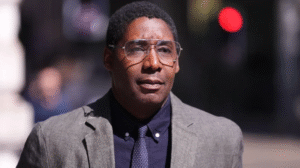A column by Felicity Gerry KC.
In Victoria, Australia, the recent passage of tougher bail laws represents a significant shift in the criminal justice system, aimed at reducing crime. However, this legislative change poses a disproportionate threat to women and vulnerable populations, including Indigenous people and trafficked persons. While policymakers argue these reforms are necessary to safeguard the community, the ripple effects on vulnerable Victorians are alarming.
The changes come only a year after bail laws were altered after the death of Indigenous woman Veronica Nelson in 2020. It took a woman to die screaming for help in custody before the cruelty was recognized. Memories have faded far too quickly.
Foucault once said that the spectacle of public executions and torture of centuries ago has been replaced by the penal system in Western society — that the development of prisons is part of a dysfunctional disciplinary society where discipline becomes a formula for domination — where there is no room for understanding. As defence counsel, whether we engage in the philosophy or not, we have a unique insight into innocence, misunderstandings, bias, and cruelty.
Women and Bail
Women make up a small proportion of the prison population but are generally affected by punitive bail regimes. In Victoria, the new laws will mean many women in prison will be unsentenced. Rising numbers of unconvicted persons held in prison is a disturbing trend that risks the overuse of remand for women who do not necessarily pose a real threat to society. Many accused women face charges for non-violent, economic crimes related to poverty or experiences of violence. Women’s vulnerabilities, such as mental health issues, family violence, and homelessness, can make it more difficult for them to secure bail. Rather than receiving support, many women will likely, under the new laws, be detained due to systemic issues that increase their likelihood of being remanded in custody. For example, a woman without a stable address, even if due to family violence, may be denied bail, leading to an unjust cycle of incarceration.
International standards, including the United Nations’ Bangkok Rules, recognise the high levels of vulnerability amongst women in criminal justice and call for states to take gender-specific approaches to criminal justice through a least restrictive means approach. The rules emphasize that women’s pathways into crime often stem from social and economic inequalities. The Victorian bail system, however, has ignored these realities, focusing instead on public safety more broadly, even where women are not the problem.
Indigenous Australians and the Risk of Over-Policing
The new laws are also likely to have a severe impact on Indigenous accused persons, who are already overrepresented in criminal justice systems. Cultural considerations such as the importance of maintaining family ties and fulfilling community obligations risk being overlooked. Trying to suggest systemic discrimination arising from years of Aboriginal deaths in custody will place defence lawyers in an impossible position. The new laws, which impose even stricter bail conditions, will likely worsen client situations, leading to further entrenchment of Indigenous persons in the corrections system.
Trafficked Persons: Victims Treated as Criminals
Victoria’s bail laws also fail to account for trafficked persons, a major oversight. Trafficked individuals are often forced, compelled, or coerced into illegal activities as part of their exploitation, but under current and new bail laws, they may be treated as criminals rather than victims. International human rights law, including the UN Trafficking Protocol, insists that trafficked persons should not be punished for crimes they committed because of being trafficked. However, Victoria’s criminal justice system already lacks the protective mechanisms necessary to shield these individuals from prosecution and unjust incarceration, and this lack of understanding, of non-punishment of victim perpetrators, is unlikely to be understood at the bail stage, further victimising individuals who are already severely exploited.
Mental Health and Other Vulnerabilities
In addition to trafficked persons, people with mental health issues or other significant health concerns are also at risk of being unjustly detained under the new bail regime. The right to health, as outlined in international human rights instruments, includes access to healthcare and treatment, which may be severely limited for those on remand. The absence of meaningful alternatives to incarceration for people with such health issues contributes to recidivism rather than rehabilitation.
Global Perspective: Harsh Punishments and Ignored Alternatives
Global and local media narratives often reinforce the idea that incarceration is the only option for serious crimes, ignoring viable alternatives like restorative justice, community service, probation, or treatment programs. Globally, the issue of punitive justice extends beyond domestic borders. The United States, for example, is seeking to send men to serve sentences in foreign prisons, such as those in Ecuador, where conditions are notoriously harsh. This practice reflects a growing trend in some countries to outsource punishment rather than seek alternatives that emphasise rehabilitation. Even when labelled as members of “gangs,” these are often exploited individuals.
Foreign prisons are known for overcrowding, poor sanitation, and limited access to healthcare, exacerbating the already dire situations faced by inmates. Sending offenders to such facilities raises human rights concerns, as the prison conditions fail to meet international standards for humane treatment. This trend also reflects a broader global reliance on punishment rather than exploring alternatives that prioritise rehabilitation and societal re-entry. Is Victoria following this trend, and how will prisons trend if filled with the unconvicted? The danger of not considering more humane and effective alternatives that emphasise rehabilitation, healing, and societal reintegration is the warehousing of people with reliance on punitive measures demonstrably torturous throughout history and contrary to all good research.
Alternatives to Incarceration: What Can Be Done?
Alternatives to mass incarceration can focus on accountability, rehabilitation, and reintegration, which are often more effective in reducing recidivism, addressing the root causes of criminal behaviour, and providing long-term benefits to both offenders and society. Moreover, rehabilitative approaches are particularly critical for vulnerable groups, such as trafficked persons, women, and those with mental health issues, who are disproportionately affected by harsh prison sentences.
A more humane and effective approach would emphasise alternatives such as:
- Restorative Justice Programs: These focus on reconciling offenders with victims and communities, allowing for accountability and healing.
- Community-Based Sentencing: Probation, parole, or house arrest can reduce incarceration rates while still holding offenders accountable.
- Treatment Programs: For those with addiction or mental health issues, rehabilitation programs can address the root causes of offending behaviour.
- Vocational Training and Education: Offering offenders the skills needed to reintegrate into society can lower recidivism and provide opportunities for a productive future.
Such alternatives are often more cost-effective and result in better long-term outcomes for both individuals and communities. By shifting the focus from punitive to rehabilitative justice, governments could reduce the human and societal costs of harsh prison sentences and foster a more just and equitable system. This is not soft but responsive, with the purpose of crime reduction.
A human rights-based approach to bail, which prioritises alternatives to remand and considers the specific needs of vulnerable populations may not be popular but is likely to be more effective if commitments are properly made to addressing the underlying social issues that lead to offending — such as poverty, mental health issues, and systemic bias — the new laws impose a blanket approach that will inevitably result in the unnecessary imprisonment of vulnerable individuals. This not only violates international human rights standards but also fails to contribute to long-term public safety. Studies have shown that imprisonment, especially for remand prisoners, increases the likelihood of reoffending, particularly for those from disadvantaged backgrounds.
Victoria’s new bail laws are a step backward and fail to consider the specific circumstances of women, Indigenous people, trafficked persons, and those with health issues. This will ultimately institutionalise discrimination and contribute to the growing prison population. Rather than increasing public safety, these laws entrench labels, social inequalities, and perpetuate cycles of incarceration.
To persuade the public that not all accused individuals are dangerous, it is crucial to emphasise the presumption of innocence. Bail, when carefully assessed, provides a way to ensure that accused individuals appear in court without unnecessarily subjecting them to pretrial detention. Additionally, bail systems can incorporate monitoring, regular check-ins, or other conditions that ensure accountability, allowing individuals to maintain their livelihoods and families while awaiting trial. The mere fact of arrest and bail conditions can often make a significant difference.
Ultimately, Victoria’s bail system is now a public spectacle, reinforcing systemic inequalities, leaving women and other vulnerable populations unfairly punished before their cases are even heard.
Reforms that prioritise the least restrictive means of pre-trial detention, as required by international human rights law, are the better course. In the meantime, defence lawyers have yet another uphill battle in Australia.












